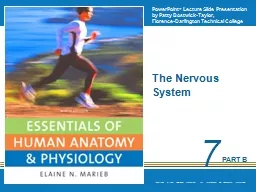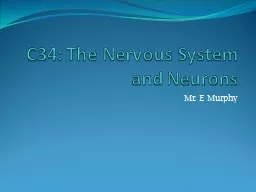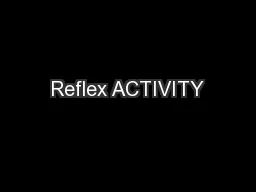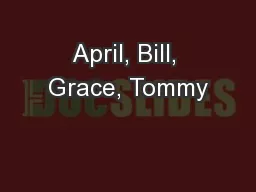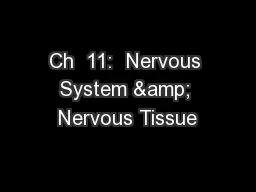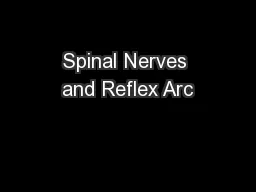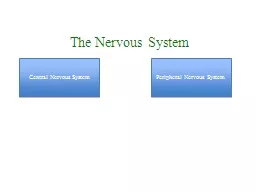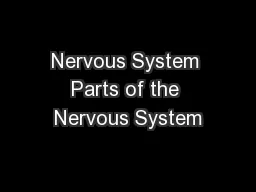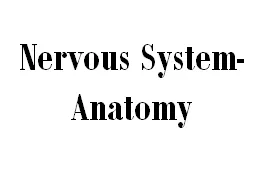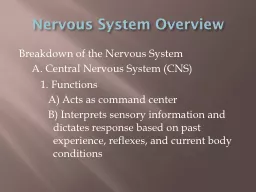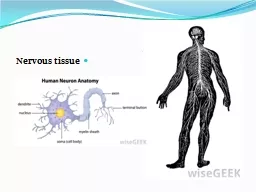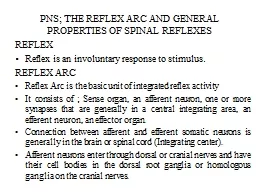PPT-The Nervous System The Reflex Arc
Author : littleccas | Published Date : 2020-06-16
Reflex Occurs over pathways called reflex arcs Reflex arc The Reflex Arc Figure 711a Stimulus at distal end of neuron Skin Spinal cord in cross section Interneuron
Presentation Embed Code
Download Presentation
Download Presentation The PPT/PDF document "The Nervous System The Reflex Arc" is the property of its rightful owner. Permission is granted to download and print the materials on this website for personal, non-commercial use only, and to display it on your personal computer provided you do not modify the materials and that you retain all copyright notices contained in the materials. By downloading content from our website, you accept the terms of this agreement.
The Nervous System The Reflex Arc: Transcript
Download Rules Of Document
"The Nervous System The Reflex Arc"The content belongs to its owner. You may download and print it for personal use, without modification, and keep all copyright notices. By downloading, you agree to these terms.
Related Documents

